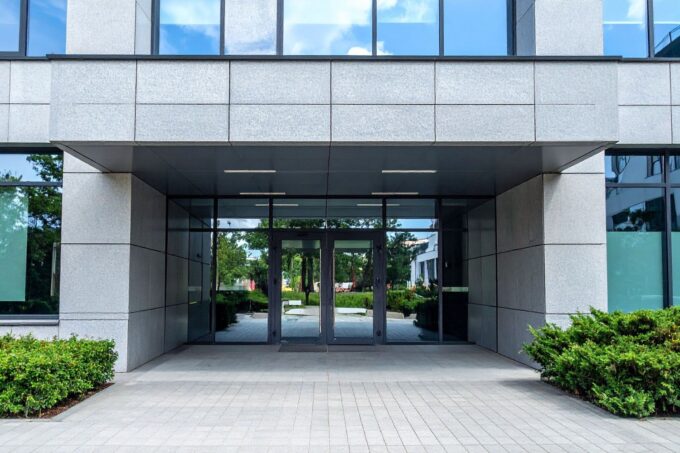- Home
- Articles
- Architectural Portfolio
- Architectral Presentation
- Inspirational Stories
- Architecture News
- Visualization
- BIM Industry
- Facade Design
- Parametric Design
- Career
- Landscape Architecture
- Construction
- Artificial Intelligence
- Sketching
- Design Softwares
- Diagrams
- Writing
- Architectural Tips
- Sustainability
- Courses
- Concept
- Technology
- History & Heritage
- Future of Architecture
- Guides & How-To
- Art & Culture
- Projects
- Interior Design
- Competitions
- Jobs
- Store
- Tools
- More
- Home
- Articles
- Architectural Portfolio
- Architectral Presentation
- Inspirational Stories
- Architecture News
- Visualization
- BIM Industry
- Facade Design
- Parametric Design
- Career
- Landscape Architecture
- Construction
- Artificial Intelligence
- Sketching
- Design Softwares
- Diagrams
- Writing
- Architectural Tips
- Sustainability
- Courses
- Concept
- Technology
- History & Heritage
- Future of Architecture
- Guides & How-To
- Art & Culture
- Projects
- Interior Design
- Competitions
- Jobs
- Store
- Tools
- More
Preventive Maintenance Tips for Warehouse Machinery

If you manage a warehouse or fulfillment center, you know the pain all too well:
Unexpected machine breakdowns throwing off your entire operation, last-minute rush repairs eating up your budget, and energy bills creeping higher without clear cause.
You want your equipment to run smoothly, your maintenance costs predictable, and your downtime minimized—but getting there feels like a moving target.
This article is here to help. We’ll walk you through practical, proven preventive maintenance strategies tailored specifically for warehouse machinery — from forklifts and conveyor systems to HVAC units and more.
Read on to discover how to cut costly downtime, keep your operations running like clockwork, and slash unnecessary maintenance and energy expenses along the way.
- Schedule Maintenance Based on Equipment Usage Patterns
Machines don’t all wear out at the same rate.
A forklift used 8 hours per day will wear much faster than one used twice a week.
Meaning: Rigid, calendar-based schedules will often result in undermaintenance (risking breakdowns) or overmaintenance (wasting resources).
A better idea is to use data from machine usage (hours run, cycles completed, workload intensity) to schedule service when it’s truly needed—not too soon, not too late.
Example: Let’s say your automated pallet wrapper runs 16 hours/day, while a spare unit runs only during peak season. Instead of servicing both monthly, use sensor data or operator logs to service the high-use machine every 250 hours of operation, while the other can be serviced only when it crosses the same usage threshold.

- Use IoT Sensors to Predict Failures Before They Happen
Modern IoT sensors and predictive analytics can detect early signs of trouble—like rising motor temperatures, unusual vibration levels, or a drop in hydraulic pressure—before they escalate into costly breakdowns.
If you’re not using them, you’re likely wasting both time and money without even realizing it.
Take a warehouse that relies heavily on conveyor belt systems for order fulfillment.
By installing vibration and temperature sensors on the motor, the system quickly learns what “normal” looks like. A few weeks in, it flags a sudden spike in motor temperature. That alert triggers a quick maintenance check.
Turns out, the motor was on the verge of overheating due to a clogged vent—something your team fixes in under 30 minutes.
Without that sensor? You’d likely be looking at hours of unplanned downtime, missed shipping deadlines, and a whole lot of chaos.
So yeah, a small investment in these today could save you a massive repair bill (and a few gray hairs) tomorrow.
Pro tip: If you’re just starting out, you don’t need to go fully digital across the board. Start with your most critical machines (e.g., forklifts, HVAC, conveyor belts), a basic predictive maintenance platform, and simple sensors that monitor one or two variables.
- Assign Clear Ownership for Maintenance Tasks
One of the most overlooked—but most impactful—steps in preventive maintenance is simply assigning clear ownership.
Because when no one owns a task, it often doesn’t get done. Or it gets done late, poorly, or not at all.
One mid-sized warehouse divided preventive maintenance into 3 tiers:
- Tier 1: Operators check fluid levels and belts at the start of the shift (logged in a checklist app).
- Tier 2: Maintenance techs perform weekly inspections (logged in CMMS).
- Tier 3: Certified external vendors handle quarterly diagnostics on AS/RS or HVAC.
– where each task has an owner, a checklist, and digital proof of completion.
The result? A 30% increase in on-time maintenance, fewer surprise breakdowns, and zero missed inspections in the following quarter.
That could be your story too—if you start assigning roles clearly, tracking them digitally, and building a habit of follow-through.
- Invest in a CMMS for Streamlined Scheduling and Reporting
Did you know that organizations that properly implement CMMS technology have documented ROI figures as high as 800%?
For a facility with $300,000 in annual maintenance costs, that would mean $45,000 in savings from a well-executed CMMS that costs just $5,000 annually.
That’s why you too should look for a CMMS, and preferably one that integrates with your WMS or ERP system.
That way, your asset history lives in the same ecosystem as your warehouse data.
- Prioritize Energy Efficiency via System Calibration
As you know, even slightly off-calibration machinery can quietly drain your budget.

What starts as a small, barely noticeable spike in your power usage often turns out to be something like your HVAC sensors being just 2 degrees off—which leads to constant overcooling, higher compressor loads, and a sharp uptick in your energy bill.
That’s money leaking out month after month.
To avoid this silent profit-killer, set a quarterly reminder to calibrate any high-energy or continuously running equipment—think automated conveyor belts, industrial chargers, or HVAC units.
The payoff? On average, a 12–18% reduction in both maintenance and energy costs, just from keeping your machines dialed in.
- Roll Out Your Strategy in Phases
Instead of overhauling your entire maintenance system overnight, start with a pilot zone—just one machine type or one section of your facility.
Let’s say you’re running a 100,000 sq. ft. fulfillment center. Begin with a focused trial: 5 forklifts and one conveyor line.
Track performance, downtime, and maintenance costs over 6 months. Once you’ve proven ROI, scale the same playbook across the rest of your operation.
Why this works: Gradual rollout gives you room to fine-tune the process, build internal proof, and earn team buy-in—crucial if you want this to stick long-term.
Because if your team’s not on board, even the best strategy is just paperwork.
illustrarch is your daily dose of architecture. Leading community designed for all lovers of illustration and #drawing.
Submit your architectural projects
Follow these steps for submission your project. Submission FormLatest Posts
Furniture Movers by the Hour: Complete Guide to Hourly Moving Services in 2025
Introduction Furniture movers by the hour are professional moving services that charge...
Where To Charge Rivian: Complete Guide to Charging Locations and Networks
Introduction Rivian electric vehicle owners can charge their vehicles through multiple charging...
Frank Gehry Architecture: Style, Innovation and Iconic Works
Frank Gehry is one of the most influential architects of our time,...
The Dialogue Between Islamic Architecture and Modern Design
Explore Islamic architecture and modern design: climate-smart strategies, case studies, and courtyards,...












Leave a comment